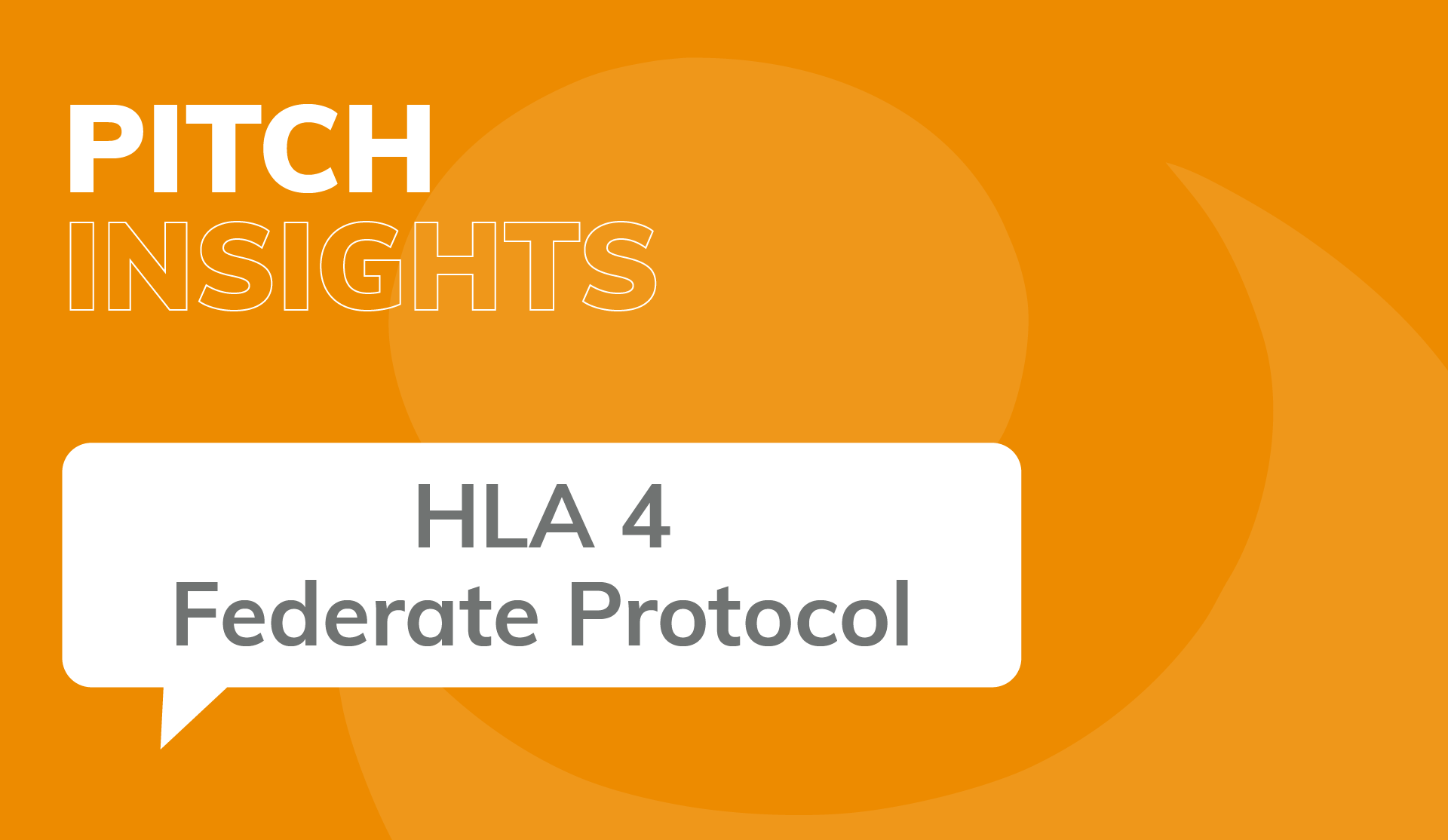Simulation environments continue to evolve, from local setups to globally distributed, cloud-based infrastructures, and the need for flexible, secure, scalable communication frameworks has never been greater. That’s why the HLA 4 Federate Protocol is such a game-changer.
Included in the latest version of the High Level Architecture (HLA) standard, the Federate Protocol introduces a new way for federates to communicate with the Run-Time Infrastructure (RTI), complementing traditional C++ and Java APIs. In this article, we’ll explore what makes the protocol so powerful and how it unlocks new possibilities for distributed simulation.

Built for Today’s Networked Simulations
HLA is designed to ensure interoperability and reusability in simulation systems. Early implementations often ran on tightly controlled local area networks, but today’s simulation needs are far more complex. WAN-distributed and cloud-native environments require robust, scalable solutions.
This is where the Federate Protocol comes in.
It enables federates to connect to the RTI using a client-server architecture, maintaining secure, reliable TCP connections, complete with Transport Layer Security (TLS) 1.3 and WebSocket support. The protocol fits neatly into existing systems, as each new individual client results in the Federate Protocol Server creating a new connection to the RTI, allowing it to integrate seamlessly into traditional RTI deployments.

Seamless Integration with Existing Toolchains
Although not explicitly required by the standard, Pitch’s open-source Java and C++ Federate Protocol client libraries (available on GitHub) are interchangeable with Pitch’s Local Runtime Client (LRC) libraries. This allows users to switch communication methods based on their needs—without recompiling code.
This flexibility is invaluable when running simulations in elastic cloud environments. New federates only need to know the address of the Federate Protocol Server—they don’t need to understand the rest of the network. This contrasts with traditional peer-to-peer multicast-based RTIs, which are optimized for LANs.
This is also incredibly useful when simulations running in secure environments, such as behind a corporate IT system, want to communicate with each other. They simply only need to know a single address to connect to with no need for special network configurations. This is very similar to the way in which you’re able to read this blog right now!
Both approaches have their strengths, and the right choice depends on your specific simulation use case.
Greater Reliability Through a Session Layer
Another standout feature is the addition of a session layer above TCP, which provides increased robustness in unstable network conditions. Federates can reconnect without restarting the simulation session—crucial for scenarios like Live, Virtual, and Constructive (LVC) training, where real-world participants (e.g., instrumented soldiers) may join from mobile or low-bandwidth environments.
This feature was on display at our recent tradeshows, where attendees joined simulations as a Javascript federate directly from their phones, demonstrating just how far HLA has come.
A Common Language for Federates: Protocol Buffers
Traditionally, HLA APIs officially supported only C++ and Java, limiting developers working in other languages. The Federate Protocol changes that by adopting Google’s Protocol Buffers for all data exchange—standardized as part of the HLA 4 specification.
This shift enables easy integration with languages like Python, Rust, JavaScript, Go, and more. Developers now have the freedom to choose the right tools for their simulator, dramatically expanding what’s possible in a simulation federation.
Enhanced Transparency and Security
A standardized message format also introduces a significant advantage: network traffic can now be inspected. This is vital for debugging, compliance, and security, especially in cloud-based or classified simulation environments.
For example, edge-facing gateways in a secure simulation can analyze outgoing Federate Protocol traffic to ensure it meets data protection standards—without needing to reverse-engineer proprietary formats.

Get Started with Open-Source Clients
Pitch is committed to open innovation. We’ve released open-source Java and C++ Federate Protocol clients. The source code is available now on GitHub: https://github.com/Pitch-Technologies
We expect the number of publicly available open-source client libraries to grow as more and more teams and projects adopt Federate Protocol.
Modern Simulation Needs Modern Protocols
The HLA 4 Federate Protocol represents a major step forward for simulation interoperability, scalability, and openness. Whether you’re building cloud-native training systems or integrating remote users into complex federations, this protocol offers the flexibility and reliability you need.
Pitch Technologies is here to help you get the most out of HLA 4. Contact us to learn how we can support your simulation goals.


